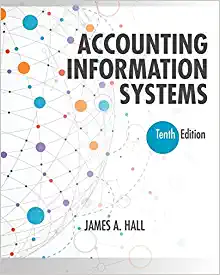Generators R Us (GRU) is a manufacturer of portable electric generators used for emergency power supply in
Question:
Generators R Us (GRU) is a manufacturer of portable electric generators used for emergency power supply in both civil and private disaster situations. GRU’s headquarters and manufacturing facilities are in Dallas, Texas, where they employ 125 manufacturing and clerical staff. Although much of the company’s accounting system employs advanced technology, its payroll and fixed asset systems are legacy systems that rely on prepares a cash disbursement voucher, which she sends along with the invoice to the cash disbursements clerk. At the end of the day, the clerk prints hard-copy summaries of the AP and fixed asset inventory ledgers, which she sends to the general ledger department. Upon receipt of the cash disbursement voucher and invoice, the cash disbursements clerk, using the department PC, prepares a check and posts the relevant data to the check register. The clerk then prints a hard copy of the check and sends it to vendor. The cash disbursement voucher and invoice are then sent to the general ledger department. User department managers handle the asset maintenance and disposal. They calculate depreciation and approve asset disposal for retired assets. Related to these actions, the managers prepare depreciation and asset disposal reports, which they send to the AP clerk, who updates the appropriate fixed asset inventory accounts. Finally, the general ledger department clerk receives and reconciles the vendor invoices, cash disbursement vouchers, and account summaries. Using the department PC, the clerk posts to the respective general ledger accounts and files the documents in the department.
Required
a. Prepare a data flow diagram of the current payroll and fixed asset systems.
b. Prepare system flowcharts for the payroll and fixed asset systems.
c. Describe the uncontrolled risks associated with these systems as they are currently designed.
d. Describe the physical and IT controls needed to reduce the risks identified in “c” above.
Step by Step Answer:






